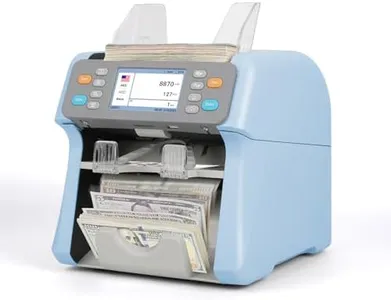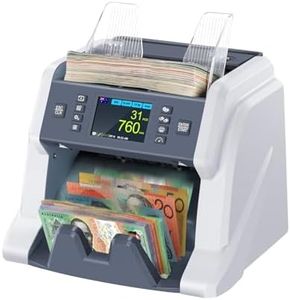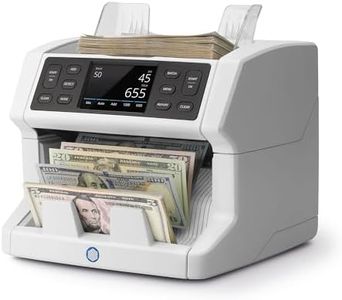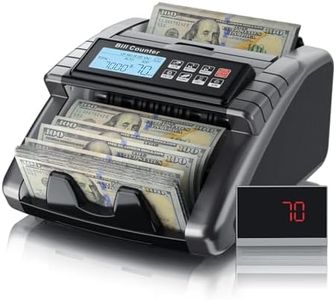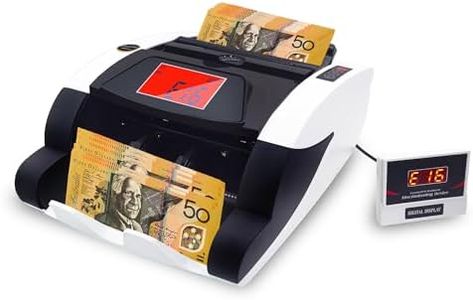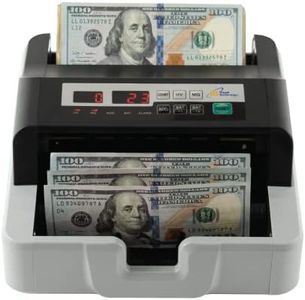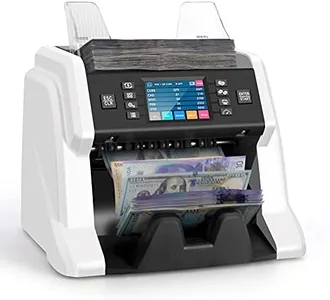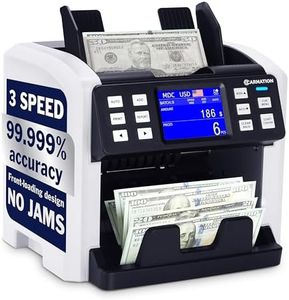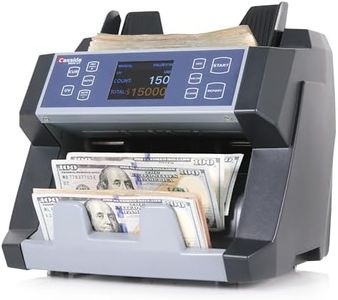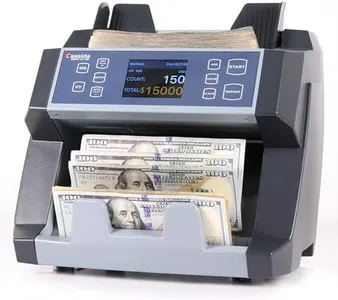We Use CookiesWe use cookies to enhance the security, performance,
functionality and for analytical and promotional activities. By continuing to browse this site you
are agreeing to our privacy policy
10 Best Money Counters
From leading brands and best sellers available on the web.Buying Guide for the Best Money Counters
Selecting a money counter is all about matching the machine's features to your typical cash-handling needs. The right choice will save you time, reduce counting errors, and spot counterfeit notes if necessary. Consider how frequently you’ll use it, the volume of bills you process daily, and whether you need to detect fake currency. By understanding the key specifications, you can make a confident decision that streamlines your cash management tasks.Counting SpeedCounting speed refers to how many bills a money counter can process per minute. This is crucial because it determines how quickly you can complete your cash-handling task. Most machines fall into three broad speed categories: entry-level (600-900 bills per minute), mid-range (900-1200 bills per minute), and high-speed (1200-1800+ bills per minute). If you work in an environment with lots of cash transactions, such as a retail store or bank, a faster machine can significantly improve efficiency. For lower volume operations, a slower machine is often enough and can be more cost-effective.
Bill Hopper CapacityThe hopper is where you place the bills before counting starts, and its capacity tells you how many bills you can load at once. A small hopper (50-100 bills) suits low-volume needs, while medium (100-300 bills) and large (300+ bills) hoppers cater to busier settings. Choosing a hopper capacity depends on how often you want to reload the machine during counting. If you process large batches at once, a bigger hopper saves time and effort.
Counterfeit DetectionMany money counters offer ways to spot fake bills, using features like ultraviolet (UV) detection, magnetic (MG) detection, or infrared (IR) sensors. UV checks for features that glow under ultraviolet light, MG detects the ink's magnetic properties, and IR looks for specific patterns. For businesses at higher risk of receiving counterfeit notes, advanced detection methods provide extra security. If your exposure to fake notes is low, basic detection or none may suffice.
Bill Size CompatibilityThis spec indicates what sizes of bills the machine can handle. Some counters work only with standard-sized currency, while others adjust to various sizes. If you plan to count different currencies or deal with worn, folded, or torn bills, flexibility in bill size compatibility is important. For handling a single, standard currency in good condition, this is less of a concern.
Batching and Add FunctionsBatching allows you to set the counter to stop at certain numbers of bills, which is useful for preparing bank deposits. The add function totals bills counted in multiple sessions. If you often prepare cash deposits or need to bundle bills, look for machines with these features. For simple counting needs, these may be less essential.
Display Type and Ease of UseThe display shows your counting results and error alerts. Some money counters offer basic number displays, while others may have multi-line or touchscreen interfaces. A clear, easy-to-read display and intuitive controls help you avoid mistakes and speed up operation. If you have frequent staff turnover or want straightforward operation, prioritize user-friendly displays.
Noise LevelMoney counters can vary in the amount of noise they produce during operation. Quieter machines are useful in customer-facing environments or offices where noise may be distracting. If you use the machine in public areas or places where silence is valued, opt for a model known for low noise output.

